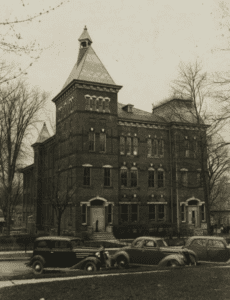Within Clay Center city limits, four tornado sirens are located throughout the town – one for each direction. The county further maintains sirens in Wakefield, at Clay County Park, Longford, Morganville, Green, and Clifton.
Running off radio waves, the sirens are tested weekly between March and November to ensure they are working as they should. However, if there is a threat of inclement weather, the sirens are not deployed to avoid confusion.
Clay County Dispatch Manager, Tera Barber, sets them off each Monday at 10 and waits to hear from designated listeners to ensure all devices are working correctly. The same folks tune in during the event of a weather threat.
“We keep them on as long as there’s a threat,” she said. “Someone will voice if they shut down and we have to give them a few seconds to reactivate.” The sirens automatically shut down before they overheat, and Barber said even just a few seconds can be enough to let the sirens cool off before they’re fired back up.
The last few years saw the sirens moving to digital, where Clay Center replaced the motherboards of city sirens. She said each town is in charge of the maintenance fees on their own warning device.
Electronic maintenance is provided by Clay Center Public Utilities, while radio maintenance is contracted to Brad Holman, a retired law enforcement officer.
Holman said he kept an electronics business on the side for the duration of his career, and now sticks to sirens in Clay and Dickinson Counties, and other related work.
“Each siren has a receiver,” he said. “There’s a specific decoder that looks for certain tones. When it gets them it responds by turning on the siren.” He added that the sirens are controlled via the public safety channel network.
Working with sirens since the early 80s when he went to school for radio communications, Holman said the devices are less finicky now that they’re digital.
“When they’re working well there’s very little maintenance,” he said. “Back in the old days, the work was really prevalent; we’d have to tune them and make sure everything was working properly.”
He said the sirens’ biggest enemies are lightning and power surges, both of which can upset the systems and break them down.
“They’re up so high so you can hear them, so inherently they’re a lightning rod.”
Meanwhile, Fire Chief John Ihnen said the sirens are made for outdoor use, not to warn people when they are inside. Though many residents can hear sirens inside, that’s not the case for all city residents.
“They’re an outdoor warning device, for people who are outside and need to know it’s not safe,” he said. “If you’re in your home your radio, TV, or cell phone should alert you.”
Ihnen added that the Fire Department also has the ability to set off the sirens in case of an emergency.
“Typically, they’re kind of a dinosaur anymore because now everybody gets an alert on their cell phone.”
Tornado sirens were first introduced to the masses in 1970, when sirens made to warn residents of an enemy attack were repurposed for severe weather communication. Today, a debate remains among living residents whether or not Clay Center had tornado sirens during the 1973 tornado. Some recall sirens while others remember police driving up and down the streets, announcing the threat on their bullhorns. (The latter was commonplace prior to organized sirens.)
Today, emergency employees agree that sirens are a good way to alert the masses who are spending time outside, particularly if there’s an event.
“They certainly save lives so we want to make sure they work,” Holman said. “I go to great lengths to make sure that Clay Center and surrounding communities are safe whenever they call.”













